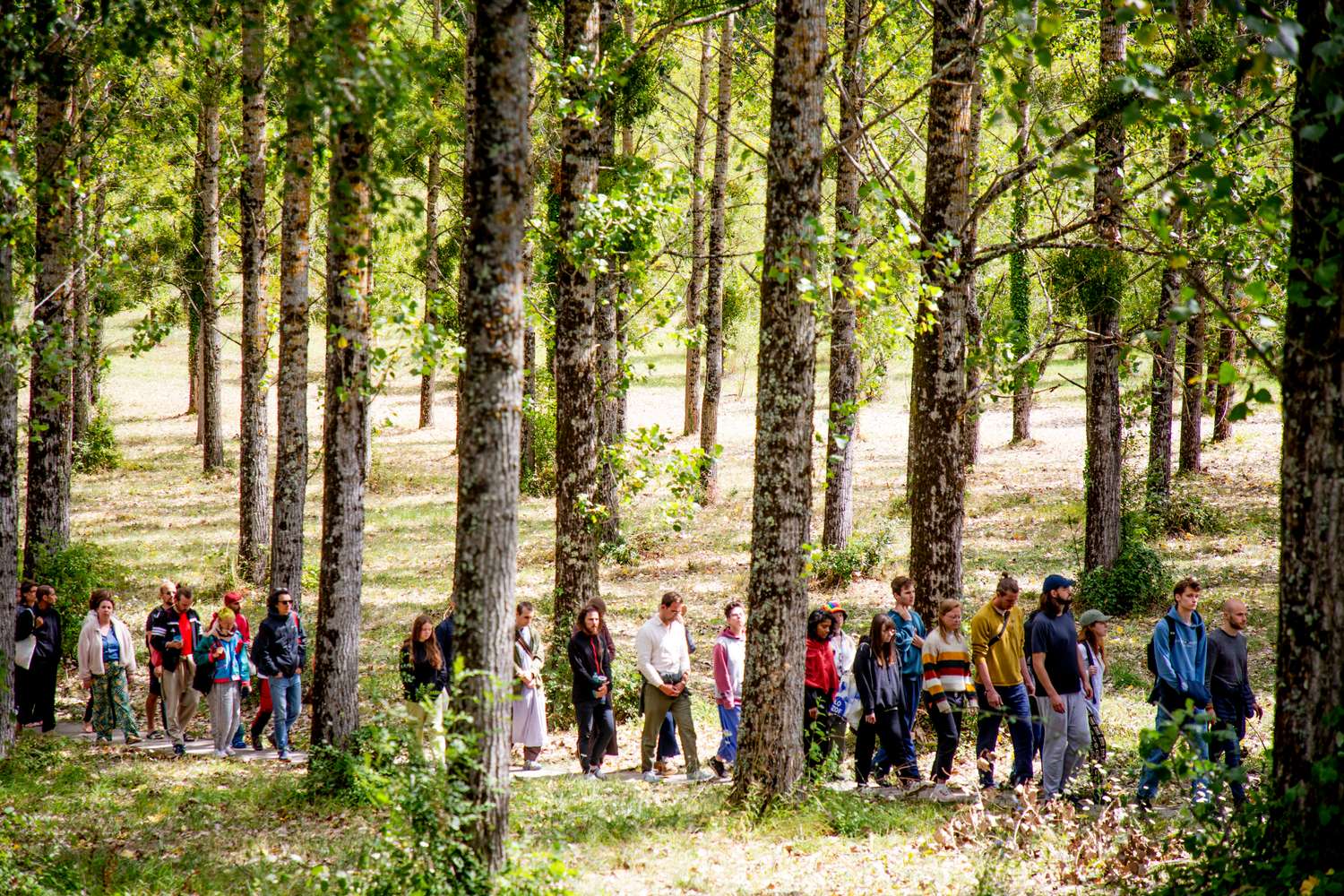Plum Village and Our Art of Saving the Planet
Brother Chân Trời Đức Niệm
The first of its kind in extent and content hosted by Plum Village, the 7-week online course “Zen and the Art of Saving the Planet” (ZASP) was curated in 2022 and later launched publicly in October 2023. Brother Troi Duc Niem was one of the monastics who participated in the course along with approximately 1,600 lay participants from nearly 50 countries on six continents.
I remember one moment during my first summer retreat in Plum Village in 2013 very clearly: Thay shared in a Q&A session that “Maybe in 100 years there will be no more humans on this planet if we continue to live like we do now." I was deeply impressed – not only by the clarity with which he described this reality, but especially by the way he said it. Thay radiated such peace, lightness and calmness when he spoke out this heavy truth, it had a deep and lasting impact on me. In my heart, an aspiration was born in that moment: I also want to cultivate and embody such peace and equanimity so that I can remain peaceful and compassionate even when the world seems to fall apart around me.
One big question and koan for me is: How can I and we have deep peace inside while not closing our eyes to the unprecedented suffering from a climate breakdown that is unfolding around us?
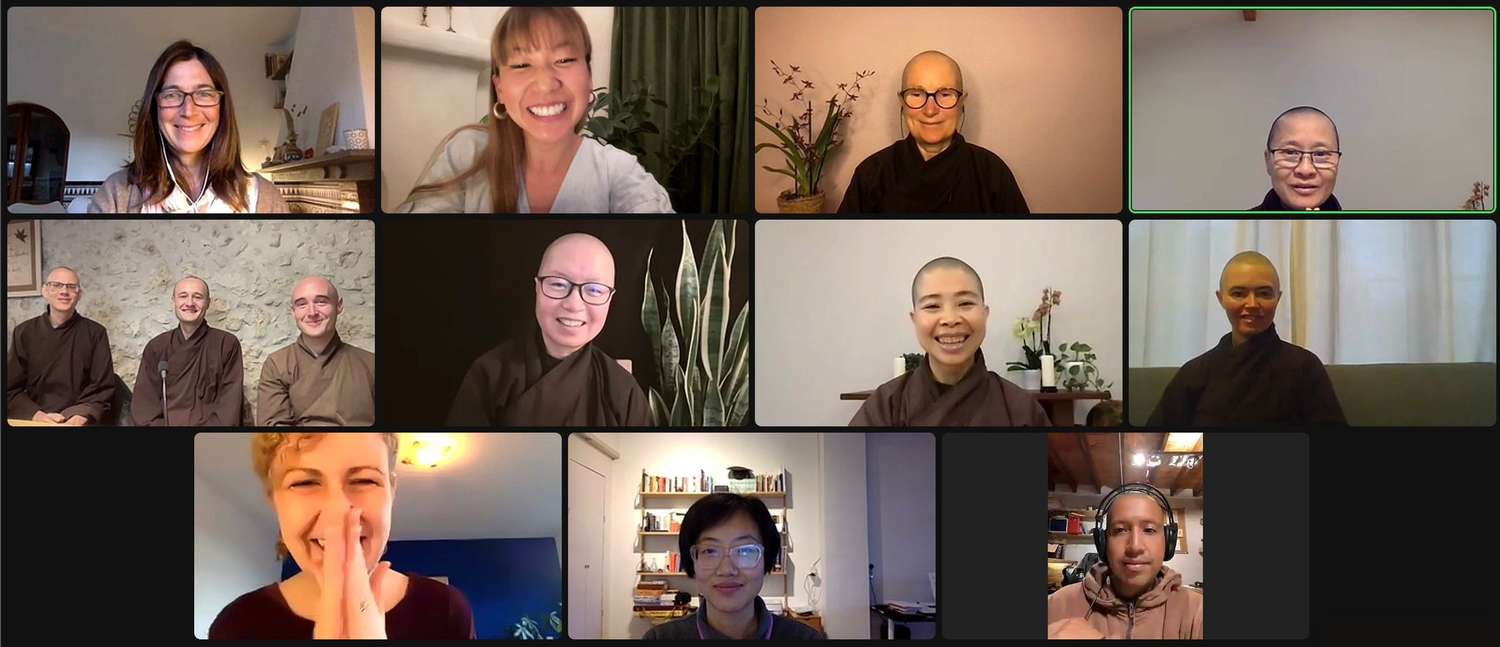
In recent years, the wish in my heart to help save the planet has manifested in very concrete and beautiful ways: Plum Village now offers the Zen and the Art of Saving the Planet (ZASP) online course and climate retreats on a regular basis (the next ZASP course will start in March 2024).
In this article, I would like to share about my own experience in joining the ZASP course, explore how it has started, and how it has supported people and groups in the climate community. We will hear feedback from ZASP participants and will reflect on the role and contribution of Plum Village in the climate movement and what teachings have been effective in this area.
To explore these questions, I interviewed Sr. Hien Nghiem (Sr. True Dedication) and Jo Confino, who are quoted throughout this article.
A new way of seeing
The scientists say it very clearly: We as humanity have only a few more years left to stay below 1.5°C in order to avoid catastrophic climate breakdown and destabilization of the fragile balance of our biosystems. This means we need to radically change our ways of living. Reading about the state of our planet and the big challenges we face have caused quite a lot of fear and despair in me. Listening to the videos of the ZASP course has helped me to have more hope, clarity and to see the situation with new eyes. This is also one of the core messages at the beginning of the course — we hear Thay speak at the House of Lords in London in 2012:
“It is my conviction that we cannot change the world if we are not capable of changing our way of thinking, our consciousness. That is why awakening, collective change in our way of thinking and seeing things, is very crucial. And that is why learning to change our way of daily living so that there is more mindfulness, more peace, more love is very urgent and we can do that now, today.”
I got a better sense why changing our way of seeing things is so important in our pursuit of saving the planet. I also notice that we should be careful of thinking in terms of pursuing a goal, even if the goal is to protect Mother Earth. In the welcome video, Sr. Hien Nghiem reminds and invites us to approach this course with a spirit of aimlessness (letting go of results/expectations). Right from the beginning, the online retreatants are being exposed to what we sometimes call the deeper teachings of Buddhism. This makes the course very enriching for both long-term practitioners and those who are completely new to the practice. So the question that came up for me was about how this special new course actually manifested.

Q: How was the idea of the Zen and the Art of Saving the Planet (ZASP) online course born?
Sr. Hien Nghiem: After the pandemic, we saw the potential of people to have a meaningful practice at home and to really transform in the online retreats, and also for us to reach a new audience. When we started seeing people from Mongolia and South Africa and Asian countries, we realized that there are just so many people who will never be able to come to Plum Village, but they would also like to touch the Dharma. When Plum Village started reopening in 2023, we saw how hard it is to do both online and in-person retreats at the same time.
So we wanted to experiment with a course that would be something that can allow us to serve this wider population while also hosting lots of in-person retreats in Plum Village. In that way, realizing Thay’s vision of the online monastery with a slightly different model. We asked ourselves how we can offer deep Dharma journeys online? I think what’s really important about ZASP is that we wanted to make a slightly longer journey. One reason to do that is because Thay’s Earth teachings are so powerful and so deep that they actually require a certain amount of time and practice to absorb and to apply. So with the course, we want to equip a new generation, in particular young and engaged people, with these insights so that it can inform their work wherever they are in the world. We also had the support and experience of Christiana Figueres (one of the main architects of the 2015 Paris Climate Agreement and student of Thay) in designing the course for it to be really pegged and appropriate to the climate movement.
Touching stillness and the wonders of life
I have not been involved in creating the ZASP course, so autumn 2023 was my first time of seeing and experiencing the course. What struck me immediately at the beginning was the beauty and elegance of the beginning of each video: scenes of majestic mountains with snow, green bamboo swaying in the wind and the gentle rising of the sea that flowed harmoniously with the beautiful sounds of the violin and cello. It helped me to instantly touch stillness, peace and the wonders of life – the bells of mindfulness of Mother Earth that are calling us to stop and look deeply.
Another thing I noticed was the high quality of the videos and short teachings by the various Dharma teachers – they went straight to the heart of the matter, sharing concisely and concretely relevant insights and practices with vivid examples from their own lives. One video that directly spoke to me was when Br. Phap Dung shared about the meditator, the artist and the warrior and how we can cultivate these energies in our lives. I realized that it would be beneficial for me to allow the artist in me to manifest more, e. g. by playing music sometimes, so that the creative and joyful side of me can flourish more and balance the more serious analytical mind of mine.
Q: What insights did the curating team have while they were creating the ZASP course?
Sr. Hien Nghiem: I think that our shared insight gave us the courage to offer deep Dharma right away. In the course, already in week two we go into the end of civilization and the Diamond Sutra and so on, because we had a lot of faith in people’s courage to touch the deeper Dharma. Thay was also committed to sharing the deepest teachings on no birth and no death in every retreat and I feel that it’s really important to continue that legacy to offer not simply mindfulness practice just to cope with strong feelings but the deep insights that help us transform the feelings.
Transformative journey
The feedback we received from the course participants, showed how transformative the journey was for many of them and how they were able to touch deep insights within themselves:
“Only non-violence can cure violence — to myself, to my relationship with family, also hopefully to countries and to the world! The strongest thing in the world are not any weapons, but our heart.”
China
“As some parts of my body are hurting, there are other parts that are not hurting, and that actually feels pleasant. It is the same with nature, and with all social movements. There are moments of despair, but in other parts of the world, there is hope, commitment and activism to make the planet a better place. I learned that both tensions are part of the same coin.”
Colombia
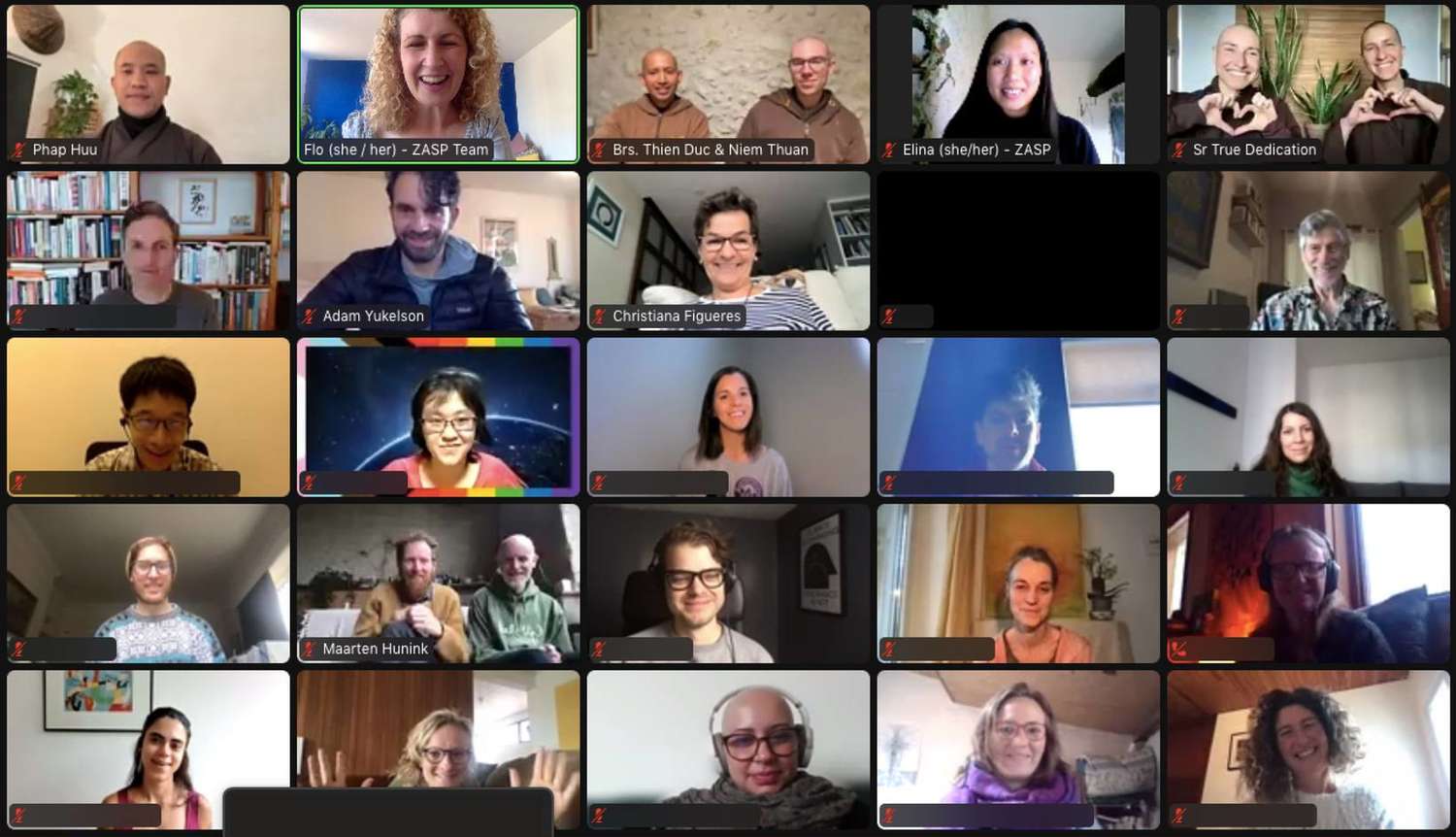
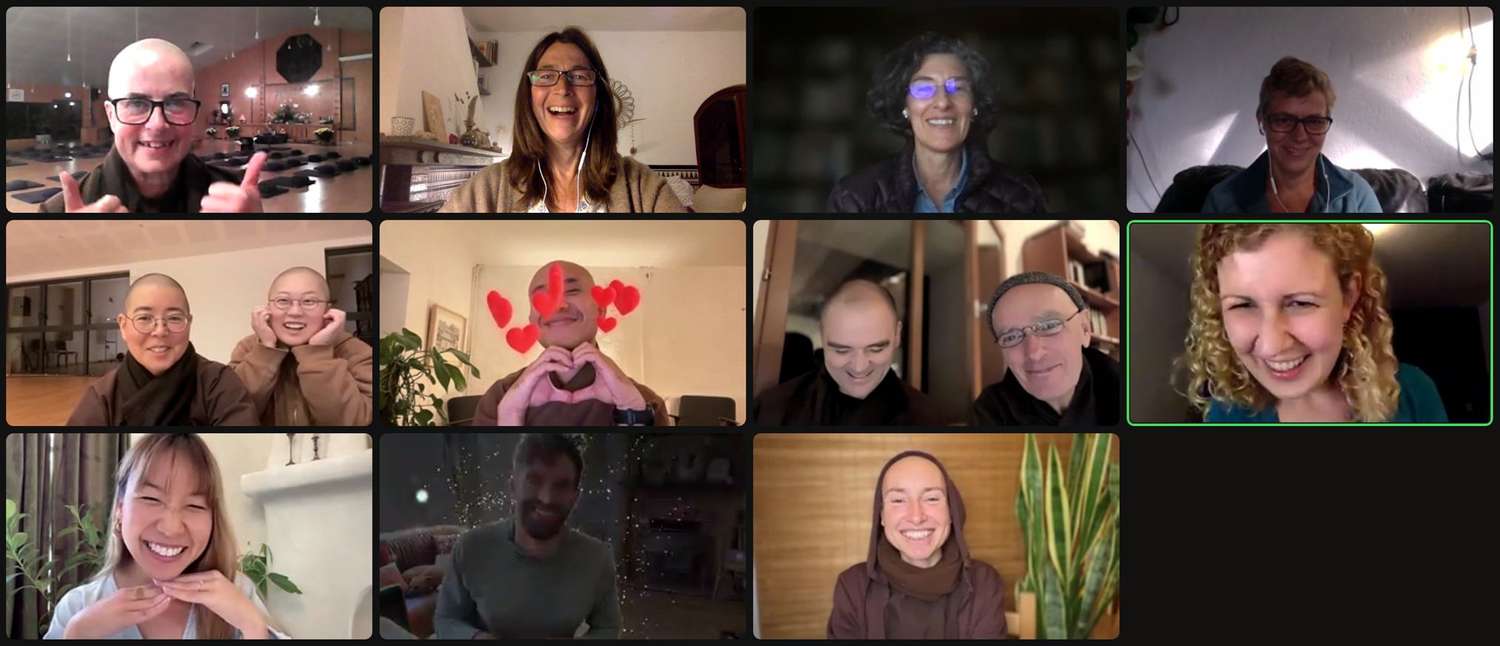
“This course was a profound and extraordinary experience for me. For years I have been teaching, engaging my students in social activism… This course helped me to realize that I was pursuing dreams and a radical awakening without being awakened myself… I am not sure I have ever been so excited by a course and the invitation for change inherent in the teachings… The talks were personal, challenging, soft-natured, evoking curiosity and openness. The online presence of the monastics and lay dharma teachers became a comfort day after day, week after week.”
USA
I experienced one transformation happening in regard to fear. In week two, Thay teaches that in order to overcome fear we must be courageous to face the potential end of our civilization. I found this video of Thay to be extremely powerful and I was happy that I could pause at certain moments and watch the video in my own time to really allow the tough truth to sink in.
I have been practicing the Five Remembrances regularly and it has helped me to be more at peace with this unsettling prospect of a potential breakdown of our societies and the ecosystems. It feels less scary and I am not too overwhelmed by the thought of it and the underlying fear anymore. I feel a new sense of freedom and clarity emerging.
In my Dharma sharing group of ZASP, the other participants have shared similar things. The teachings and meditations have helped them to change their way of life, reset their priorities, understand more about their relationships and the importance of taking care of their body. Already in the first session we had a very beautiful and deep sharing even though we were all complete strangers to each other. Over the seven weeks a strong connection manifested and my group continues to meet even after the end of the course.
Q: What do you see as the role and contribution of Plum Village in the climate movement and in helping to save the planet?
Sr. Hien Nghiem: I remember one time when Christiana Figueres was here and I asked her: “How can we support you?” And she said: “You just need to keep Plum Village going. Because the climate movement needs a place of spiritual refuge, we lack a place where we can take care of ourselves and take care of each other and touch deep healing and peace.” So primarily, what we offer in Plum Village is spiritual sanctuary, a sort of wide-eyed, brave, fearless, deep-seeing spiritual sanctuary. And that means that as a community, we also need to stay well-informed about the climate to understand the situation. So when we are with the activists, researchers, and policymakers, we can offer real deep understanding of their pain and struggle, and bring the Dharma to embrace that suffering. I think that’s really our primary role.
Jo Confino: I think the most important thing is that most people in the climate movement are trying to change technology, trying to change policy, but they are doing everything outside of themselves and they’re not doing any inner work or seeing really the transformational value of inner work to drive outer transformation. I see that many, many people in the environmental sustainability movement are burning out, they are feeling powerless, they are feeling an urgency of time. They’re trying to convince people of the need to change. All of it is a bit like pushing a very big rock up a very steep mountain. It feels like too much to do, that the weight is on their shoulders. They can’t get the change at the speed that’s necessary. They are experiencing so much grief and a feeling that they can’t win, there is a sense of existential personal crisis in it. So I think that’s the problem that’s being faced.
And now, Thay and Plum Village is coming along and offering balm to all those wounds and showing that actually the best way to be effective in the world is to slow down, and offering simple practical practices that allows people to embrace their suffering and to find a pathway through. In their rush and their panic to create change, they lose connection to their center and they feel strung out, literally strung out. So the first thing the retreat in Plum Village does is to allow them to spend time together and relax their bodies and minds to the point where they can start to have new insights. They realize how important it is to come back to a place of calm and centeredness, that actually that is where their power and energy lies. A lot of them talk about the importance of regeneration but they have not seen the value of regeneration for themselves. The other thing that Plum Village is doing is creating a sense of community in these practices. So when they’re going to meetings like the COP talks they are arranging times to sit in meditation, times for walking, and that it’s giving them new ways to see the world, new ways to act in the world, and new ways to find togetherness.
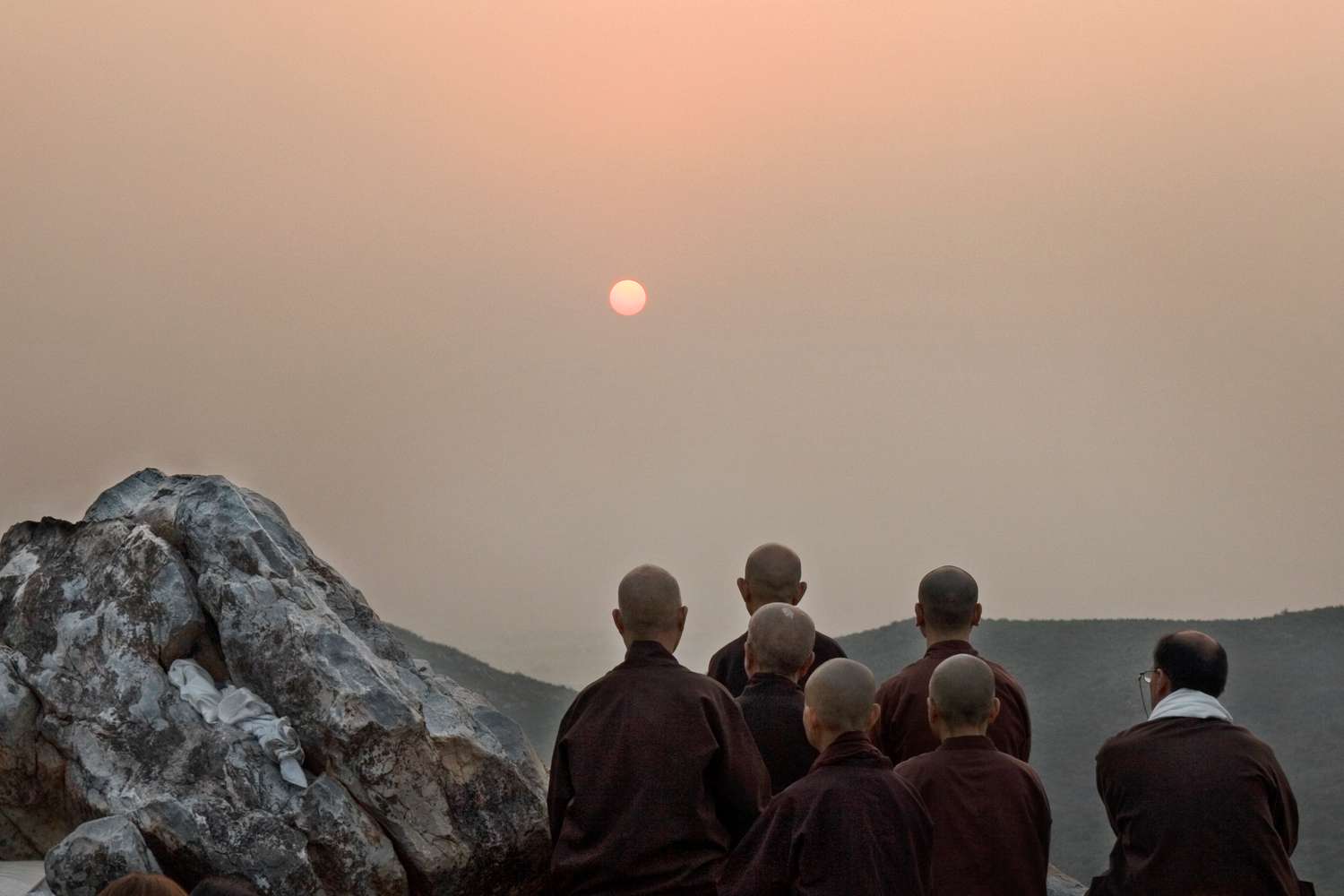
What Jo Confino is sharing resonates with me very much. When they came to the climate retreat at Plum Village, I also sensed that there is so much pressure and stress on the people in the climate community who are on the front line of saving the planet. For the young activists in particular, I feel a great deal of sympathy and admiration for their courage to speak truth to power and to not give up on helping the world to wake up. Seeing their pains and struggles touches my heart of compassion and I am very grateful that we as Plum Village have found concrete ways to support them and other changemakers with ZASP and the climate retreats.
Q: How have the climate retreats manifested and why are they important?
Sr. Hien Nghiem: I think one reason why these retreats are really important for our community to do is because Thay is considered a leading voice for climate spirituality and the Dharma. His Dharma has really inspired so many climate researchers, climate policymakers, climate leaders. So we have a sort of responsibility to keep Thay’s Dharma body alive for them. And I think it’s important to Plum Village, because Thay is one of the very few spiritual leaders that is offering real practices and insights that apply to the climate problem. We’re all working at the forefront of the climate emergency. And so it feels very important to be able to do our best to support them.
Q: Which teachings of Thay have proven to be effective for people in the climate movement?
Jo Confino: One teaching that has really helped people is the teaching on ripening. A lot of people in the climate movement can feel sort of growing anger or despair or hopelessness because they’re taking action but they’re not seeing the result of that. People have really recognized the depth of the teaching, that we can’t determine the timing of when a change can happen, but we can make a contribution. It gives people a sense of ease. The second teaching that I think is really helpful is Thay’s teaching of the ultimate and the historical dimension and a sense of letting go. They realize that letting go of the outcome doesn’t mean you stop caring, it doesn’t mean you stop putting in the effort, it actually frees you to put in the effort without the need for what success or failure looks like. It’s not about whether they have succeeded or failed, but that they are part of a continuation and they are doing their best to support living beings on this planet.
Sr. Hien Nghiem: It turns out that some of the people leading the exclusion of fossil fuels in the last COP-28 text had been to one of our climate retreats at Plum Village. So all the courage to persist and to endure and that faith and idealism to do that new thing came from people who’ve been in Plum Village, who then help each other. Some of them said it has really helped shift the landscape at the COP because there’s basically now a body of people who know how to breathe together, touch their idealism, presence and solidarity and that’s starting to actually affect the very mechanics of the COP.
I have attended two Zoom sessions with a group of them while they were at COP. Some of them met every day to sit and breathe together. They have shared that the Sangha they had at COP and knowing that they are part of a larger global Sangha have made all the difference. Hearing this gives me a lot of hope and trust.
Touching peace and acceptance
I still keep the question and koan in my heart about how can we have deep peace inside while not closing our eyes from and being overwhelmed by the suffering of the planet and its many crises. The engagement with the topic and ZASP help me see an answer that is slowly emerging: By taking care of my body, feelings and mind in this present moment, by being aware of the impermanent nature of myself and our civilization, and allowing the suffering in myself and in the world to be embraced by the love and compassion in my heart, I can touch peace and acceptance. Being in touch with the beauty of Mother Earth and hearing the birds still singing nourish my heart. However, if I do not act, I will experience what scientists call cognitive dissonance, a feeling of unease because there is a big gap between what we know and what we do – or as Thay says: Insight needs to be followed by action. So only when I am able to contribute something concretely to saving the planet – like by supporting the climate movement by offering the ZASP course or climate retreats – can I be fully at peace, because I know in my heart that we have done our part.
